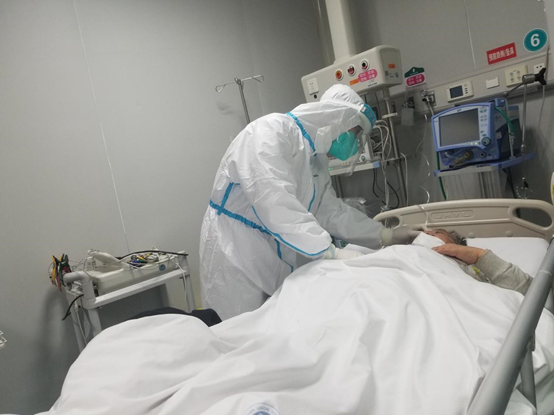来自前线的声音——程翔教授专栏文章于ESC官网发表
来自前线的声音——程翔教授专栏文章于ESC官网发表
2020年3月26日,由中华医学会心血管病学分会青委会副主任委员、华中科技大学协和医院程翔教授撰写的「Protecting cardiologists during the COVID-19 epidemic – lessons from Wuhan, China」一文,由ESC官网下设的“Insights from front lines” 专栏刊发。该文章发布后,在ESC官网上获得了很大关注。
作为在武汉COVID-19震中工作的心脏病专家,程翔教授在文章中分享了自己所在医院的治疗和管理经验。通过阐述了自己的观点,认为严格的医院培训和有效的防护可以保护医务人员免受感染。这也是对目前抗击在疫情一线医护人员的最好保护措施。
众志成城,共同抗“疫”,相信我们一定能够迎来春天!
ESC官网原文链接:
文章原文:
Protecting cardiologists during the COVID-19 epidemic – lessons from Wuhan, China
26 Mar 2020
Prof. Xiang Cheng
Director of Department of Cardiology
Union Hospital, Wuhan
Deputy Chairman of Youth Committee of Chinese Society of Cardiology (CSC)
As the fight against COVID-19 in Wuhan is turning a corner, cases are surging outside of China. We are saddened to hear of infection, as well as death, of medical staff in other countries. As a cardiologist working in the COVID-19 epicenter of Wuhan, I would like to share my experience with my fellow cardiologists.
During the epidemic, our hospitals were divided into COVID-19 designated hospitals and non-COVID-19 hospitals for patients in critical condition, such as cardiovascular and cerebrovascular diseases, hemodialysis, blood tumor, etc.
The designated hospitals needed a large staff to provide medical support, including cardiologists to manage COVID-19 patients, according to the unified management of the hospital. All doctors needed to undergo rigorous nosocomial infection training before they started work. High quality personal protection equipment (PPE) are provided to all those doctors who are on the front lines with critically ill patients. So far, none of the more than 42,000 medical staff from all over the country supporting the designated hospitals in Wuhan was infected, indicating that strict hospital training and effective protection can protect medical staff from infection.
The cardiovascular departments of non-designated hospitals were used to treat non-COVID-19 patients with critical cardiovascular diseases. However, due to the long incubation period of the virus and the presence of asymptomatic infection, the potential infection risk of medical staff in non-designated hospitals still exists.
Cardiology clinic: Because some symptoms of COVID-19 are similar to cardiovascular disease, exposure risk exists in outpatient settings. All cardiologists needed to take proper protection (including gloves, protection suits, N95 masks, work caps, goggles/protective screens, etc.) to avoid cross infection when they received patients in the outpatient department. Patients would take a temperature measurement first, and only those with a normal temperature could enter the waiting area. Patients in the waiting area should be as dispersed as possible, more than one meter apart. During the consultation, the number calling system was used, and the numbers were called in order. Strict implementation of "one doctor, one patient, and one consultation room" was performed to avoid the accumulation of calling for multiple people to wait in the consultation room. Patients and their family members needed to wear masks and keep a distance. Infusion was not allowed in the general clinic. The medical staff of the outpatient electrocardiogram room was in close contact with patients when doing electrocardiogram, so they needed proper protection.
Cardiology inpatient care: For patients who require cardiology inpatient care, our hospital has established an admission system for patients, which minimized delays in patient treatment and avoided nosocomial infections. Patients who needed to be hospitalized should undergo COVID-19 screening (CT lung screening, nucleic acid and specific IgM and IgG antibody tests) immediately. If COVID-19 was diagnosed, he/she would be immediately transferred to the designated hospital. If COVID-19 cannot be ruled out, he/she would be transferred to an isolation ward in infectious department for treatment. If COVID-19 was "excluded" temporarily, he/she would be transferred to the emergency buffer ward for treatment. Cardiologists were on duty in the emergency department, the isolation ward and the emergency buffer ward. After admission, these patients would be re-examined for COVID-19 to comprehensively assess whether there was a risk of COVID-19. If COVID-19 was still “excluded”, he/she would be transferred to CCU in cardiology department.
The CCU ward adopted the strict principle of single room admission. After 5-7 days of observation in the CCU, a comprehensive assessment of COVID-19 was performed. If COVID-19 was excluded and the cardiovascular condition was stable, he/she could be transferred to regular medicine floor ward with shared rooms.
The management of family members of inpatients was particularly important. Inpatients can only be accompanied by at most one family member, and the accompanying family member must complete the COVID-19 investigation and no other visits during hospitalization. We would provide masks to patients and family members, monitor body temperature daily and screening COVID-19 related symptoms, and a special person would report to the medical office every day.
In addition to self-protection, we should learn to protect our families. The government provided special free hotels for medical staff participating in the management of COVID-19 during the pandemic to minimize the spreading to their family members.
Again, during this pandemic, although the main presentation of COVID-19 is not cardiovascular, all cardiologists need to remain vigilant and protect ourselves. Wearing PPE is crucial. The temporary medical management system we established has effectively prevented cross-infection, and we hope that it can help the current severely affected areas.

Prof. Xiang Cheng in the emergency room
程翔教授在急诊科会诊病人
版权归原作者所有,欢迎个人转发分享。其他任何媒体、网站如需转载或引用本网版权所有之内容须在醒目位置处注明“转自中华医学会心血管病学分会”。